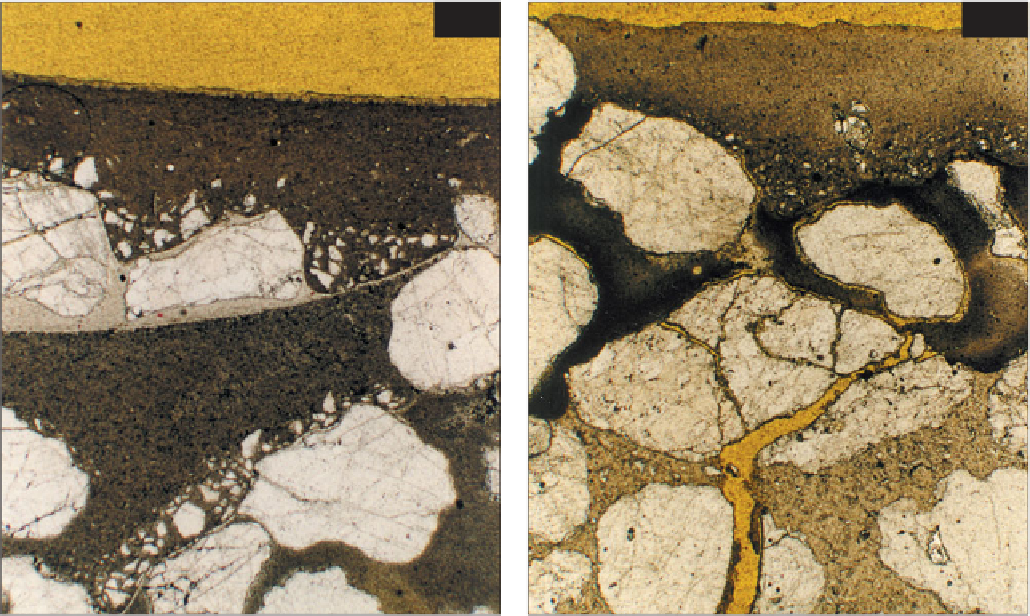Geoscience Reference
In-Depth Information
Synthetic resin floors do occasionally exhibit defects,
with the most common problem being detachment of the
resin topping due to poor preparation of the surface on
which it has been laid. Other issues involve cracks or
ripples reflecting cracks in the substrate, and cracks and
collapsed areas ('elephant's footprints') related to failure
of the underlying screed. Figure
266
shows a multilayer
synthetic resin floor, which has cracked due to collapse
of the underlying sand:cement screed. This resin flooring
is a type 4 system that incorporates pigment and fine
quartz sand filler.
Osmotic blistering is a more unusual defect that involves
the formation of water-filled blisters on the surface of the
resin floor, where moisture has migrated by osmosis and
become trapped. Osmotic blisters are usually associated
with self-levelling types of resin floor (Pye & Harrison,
1997). The different types of synthetic resin used for resin
floorings have differing ranges of durability to temperature
conditions and chemical attack. It should be noted that all
of the synthetic resins will break down in the presence of
organic solvents and polyester resins are susceptible to
attack by alkaline solutions.
265
266
265
Section through multilayer synthetic resin floor
covering, showing three separate layers consisting of
quartz sand filler particles (white) bound by
pigmented resin (grey/brown). The aggregate within
the upper two layers appears to have settled out with
the coarsest particles sinking to the bottom; PPT, ×35.
266
Cracked multilayer synthetic resin floor covering.
The covering has cracked under load due to the
underlying screed being unacceptably weak. Quartz
filler particles appear white, pigmented resin appears
grey/brown, and the cracks are shown yellow; PPT,
×35.




